PUBLISHED IN CANADIAN MUSICIAN IN OCTOBER ’97
DANIEL LANOIS
ON RECORDING
Nick Krewen
Over the years, Daniel Lanois has chosen some pretty exotic locales to conduct his business: a New Orleans mansion, a Mexican cliff side dwelling, and a converted Californian porn theatre among them.
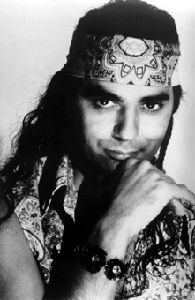
The reason for his choices, however, isn’t as scientific as one might presume.
“Hey, you’ve got to keep yourself amused,” chuckles Lanois, whose multifaceted career as musician, composer, recording artist and producer has placed him at the vanguard of contemporary music.
Although the Hull-born, Hamilton-raised French Canadian has graced us with a couple of imaginative and critically lauded solo albums in the folk-sculpted Acadie and the elegant For The Beauty Of Wynona, as well as the moody score for the Miramax motion picture Sling Blade — Lanois admittedly has made more of a mark for his production expertise.
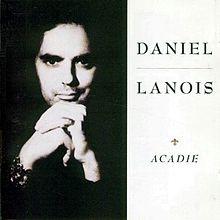

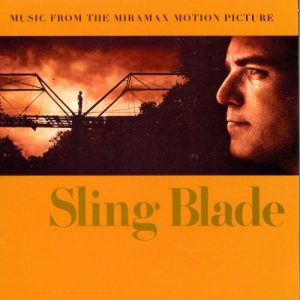
With sales approaching 30 million copies alone for U2‘s troika of breakthrough commercial successes, The Unforgettable Fire, The Joshua Tree and Achtung Baby, co-produced with Brian Eno, as well as Peter Gabriel‘s landmark So and Us albums, Lanois’ profile and reputation in the late ’80s was irrefutable.
He brought new respectability to Robbie Robertson, The Neville Brothers and Bob Dylan as artists, and in the ’90s is helping Emmylou Harris reinvent her own creative wheel, as indicated by 1995’s wonderful Wrecking Ball.
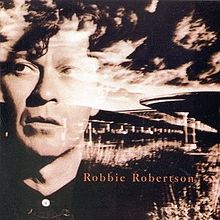
But the journey began long before the Grammies and his ownership of the impressive New Orleans mansion studio Kingsway; before his groundbreaking exploration of ambient music pathways with the aforementioned Mr. Eno; and even before the 1977 establishment of his renowned Grant Avenue Studio nestled within the heart of Hamilton.
It began with a dream, his brother Bob, and a small four-track studio in the laundry room of his mother’s Ancaster house in 1970.
The brothers Lanois recorded everyone from country artists to Haitian choirs. Early clients included Buffalo’s future funk master Rick James and Talking Heads.
It was in the early ’80s that Grant Avenue became the sonic laboratory for Brian Eno’s research into ambience and related treatments.

Brian Eno
“With Brian, he always manages to get a result, even with limited tools,” says Lanois. “It’s a good lesson. Sometimes we have preconceptions about what we need to be able to operate, but limitations can be your friend as well.”
“For me, the ambient recording that took place in the early ’80s in Hamilton were really the backbone of my experimentation. That was the most exciting time for me, in regards to experimentation. I didn’t have a lot going on around me in the sense of distraction. Nobody knew who I was, and I sat comfortably in my laboratory spending late nights working on equipment. That was a real luxury.
“At that time I met Brian Eno. There was a really concentrated period of experimentation from ’79 to ’84, and I have to say those were the real driving years for making methodic discoveries. Now there’s an ambient music resurgence, with beats and whatnot. But I feel that those records were part of the pioneer days for ambience.”
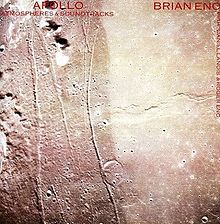

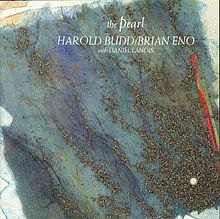
NK: “I think also maybe the pioneer days for pop, because there’s an ambient texture and feel to every record you’ve produced. I look at that as the line of consistency in your work.”
DL: “That’s a good point. When Brian Eno and I went to Ireland to work with U2, we took that sound with us. It was the sound we were excited about. They were looking to being a new chapter for themselves, and it worked very well with their music. I think there was some kind of synchronicity in the air. If you remember there was a Simple Minds‘ record called New Gold Dream that very much had that sound to it as well. I don’t know if it was synchronicity or coincidence, but the mid’80s welcomed that sound we were already experimenting with.”
After a year or so of completing several ambient album landmarks, including On Land, The Pearl (with Harold Budd), and Apollo: Atmospheres & Soundtracks (with Roger Eno, Brian’s brother), Eno got the call from U2 to produce The Unforgettable Fire and took Lanois with him to Ireland.
Now 45, Lanois has never looked back.

A restless nomad who for the moment calls Jamaica home, Lanois’ gifted combination of consummate musicianship and creative telepathy evokes soulfully passionate performances from his clients, persuading them to rise to the challenge within.
There’s an unwavering integrity, adventurous spirit and sincere musicality in the recordings he’s either created or overseen, and both his dedication and his instincts have earned him a deep and lasting respect.
“I guess my sense of commitment is really what rubs off on people, what seems to hang in the atmosphere, and people respond to that,” Lanois suggests over the phone from California.
“What I choose to work with project wise, will be something that I care about. That promotes performance better than anything I know.”
Twelve years after breaking the international barrier with The Unforgettable Fire, Dan Lanois is busier than ever.
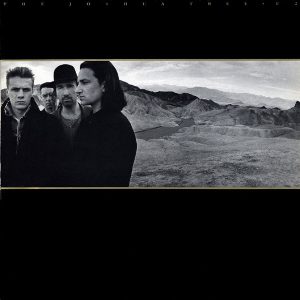
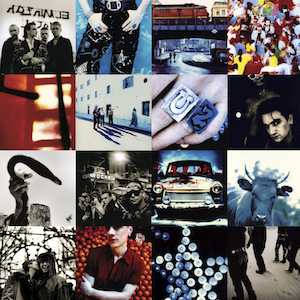
He’s just wrapped Bob Dylan’s latest album in Miami, except for “a couple of tucks and pulls;” and produced Emmylou and Emmylou-less versions of “Blue-Eyed Jane” for Dylan’s upcoming The Songs Of Jimmie Rodgers: A Tribute. He’s embarked on a promotional West Coast concert swing with Harris and Hamilton songwriter Tim Gibbons for Sling Blade, and recorded demos with model and The Fifth Element actress/singer Milla Jovovich and soulful British singer Seal.
He’s also booked to produce New Orleans drummer Brian Blade‘s debut album for Blue Note, a label for which he serves as an A&R consultant.
Lanois took an hour to speak with Canadian Musician from the studio he shares with protégé Mark Howard in Oxnard, California, before resuming sessions for his as-yet untitled third solo album, due this Fall.
“I rent a theatre in California — the Boulevard Theatro — and it’s an old Mexican pornographic cinema, about 7000 square feet of open space. And I rent that with Mark Howard and it’s fully intact — it’s got the screen there and the projection room.
“What we’ve done is we’ve picked up some old movies, and we’re projecting them onto the screen. While we’re working on music, we keep ourselves amused with the projections. We have slide projections and ’60s light shows complete with oil wheels and mirror balls.
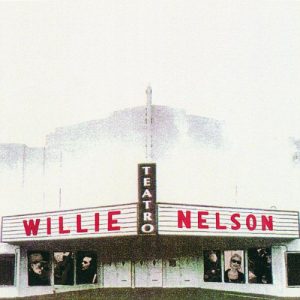
“It’s fantastic to listen to music and have these visuals coming at you, and it’s really got me thinking about how I can incorporate all of this into my future live shows. I like the idea of the installation, sort of combining cinema with live performance, so somebody can actually sit down and have an amazing time for an hour and a half or two hours.”
“Location, location, location!” well may be the mantra of the real estate agent, but Lanois has probably done more for customizing unlikely environments for potential recording sites than anyone else.
His most striking discovery was a picturesque perch near Cabo, Mexico.
“It was carved out of the top of the mountain,” says Lanois. “It was half inside and half outside. If you kept walking to the back of the control room, eventually you’d just be exposed to the elements.”
He laughs.
“It was like recording in this big Spanish courtyard. It was in the Baja. We had a provisional working space we called The Birdhouse, because it was so open there were birds and critters in there all the time. It was something special.”
However, Lanois says he’s not fastidious when it comes to choosing potential locations.
“I’ve made music in all kinds of different places, and some of them were unlikely places,” he says. “I also have to say that I really like tiny rooms. Tiny rooms give you a focus you don’t get in a bigger space.”
The choice usually varies according to situation.
“I’ve always wanted to go to Mexico, so that was just a dream that came true. With Luscious Jackson, it was, ‘Hey, they were already in that room, so I’ll bring some equipment in.’ Sometimes there’s sort of a grand dream associated with it. Other times, it’s right down to practicality.”

If the studio is going to be a high traffic area due to a flow of musicians and friends dropping by, Lanois recommends shooting for a bigger space.
“Probably one of the most difficult locations was the Luscious Jackson record Fever In Fever Out. We did the bulk of it in the drummer’s apartment, which was my suggestion, because they were rehearsing there,” he laughs, “It was really cramped. We had too much equipment. It was ridiculous. But some nice things came out of there, even though it was physically uncomfortable.
“Big spaces are good and tend to promote performance. But these intimate rooms are pretty cool too. The Neville Brothers’ Yellow Moon was done in an intimate (house) setting.
“I think in the end we’re just trying to keep ourselves interested.”

Of course, the result is only as good as the equipment you employ. Whenever the tape is rolling — and with Lanois, the tape is ALWAYS rolling — he favors the NEVE 8068 as his console of choice.
“It’s got a lot of headroom, which means you can really overdrive it, and you won’t get nasty distortion,” he explains. “You’ll get musical distortion. That pretty much comes down to the groove amplifiers that are used in most consoles. They’re without integrated circuitry. You get a certain kind of sound in the wiring. No chips.”
“I also rely on NEVEs and APIs to go to tape, monitoring on two consoles. The other one is an Amek. The Amek gets all the effects, and all the extra return I need.”
Lanois believes the NEVE 8068 is more dynamic.
“It’s what you get when you have a lot of headroom, headroom meaning you can put a lot into it, and it won’t break down. If it does break, it does so in the musical tension. I think that’s what adds up to the warmth. Overdrive, amplifiers and the mids.
“From what I can tell, what happens is the mid-range disintegrates a little bit, so it allows the bottom and the top to come through more, and that gets translated as a warmer sound. Whereas, if you were really to overdrive a more modern circuit and amplifiers, its personality would not change that much, but at a certain point it would just choke and give up, and you’d get no musical distortion. So it’s almost like a ceiling or a threshold.
“This older gear doesn’t have a ceiling. It just changes its color to accommodate the abuse,” he chuckles.
That accounts for the warmth?
“It’s a hard thing to describe,” he admits. “With digital recording, it either likes what you do or it doesn’t. It doesn’t have any in-between appreciation. So if you distort — if you send too much information to the digital format, it just flips out at a certain point, and just gives you a — BRAACK — this interesting crackle.”
Lanois emits a blaring vocal sound over the phone to illustrate the BRAACK!
” Whereas an analog or an analog kind of format will accommodate level, and it won’t go — BRAACK! It won’t scream at you, or make a nasty sound.
“So that’s the personality.”
“There’s a lot of processing equipment that I’ve used to make things more interesting. Sometimes I’ll do it while recording, sometimes I’ll do it after the fact. Rhythm boxes, beat machines and samplers are more interesting when they’re amplified. You put a sample through an 18” speaker, and it’s going to pack a certain punch it won’t have if you just record it straight into the console. I’d like to promote re-amplification.
“I also have this mixing idea that I’m starting to experiment with that I’m very excited about. Traditionally, the way mixing is done is that you take your tracks, and you put ’em back through the console, and you re-brand them.
“But what that doesn’t give you is depth of field. No amount of EQ or even a reverb creates the same depth of field you get when you mic a bunch of musicians in a room and everybody’s standing a different distance from the microphone.
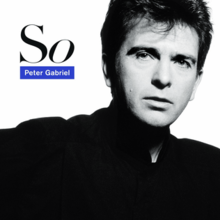
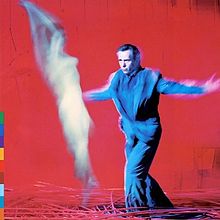
“My latest thought is that you take your 24 tracks, or whatever you’ve got, and you put each track back through an amplifier and into a speaker. So you take your bass and you pipe it through an 18″ speaker, take your hi-hat and you pipe it through a small Bose speaker and on and on, and you adjust your speakers in such a way that you create a sonic environment that you re-mic with your stereo microphone. And you get all your depth of field — exactly what you’re hearing — at that moment, which is what you will essentially get on your tape.”
Lanois says the most important sonic aspect for recording is your source.
“The instruments you use and the tones you have are at the front of the chain, and then the mikes that you use, the pre-amps — I think those are the real personality bits of the process,” he explains.
“I’m a fan of the Cole’s Ribbon Mic. That’s a currently made and available English mic. I really like the RCA Ribbon mikes, which are not made anymore. Ribbon mikes really handle transience and bass very well. It’s kind of like the stylus of a record player. It follows like a needle will follow a groove, whereas this is a ribbon that follows the sound wave that it sees. So it’s sort of this little floating flag inside. It’s a very organic sound, and dynamic. You really hear it in the mix.”
Lanois says the ribbon microphone’s greatest response is in the low mid-range.
“From 100 to 900 Hertz the ribbon microphone is really good at handling those frequencies. Those happen to be really musical frequencies that’s usually the bulk of your sound, certainly in the way of a voice or a drum or a bass guitar.”
Other microphones of preference include Neumann tube mikes.
“I have a great assortment of them,” he says. “I have two great U47s and great U49s. If you get anywhere near the drum kit with one of these, that’s going through a NEVE pre-amp and a really good compressor, you can’t miss. There’s no mystery to it. You’re going to get a recording that sounds as good as anything ever made from the ’60s and the early ’70s… and those happen to be the drum sounds that are forever sampled.
“People are still scratching their heads as to how we came up with them. That’s usually the case, you know, in the great old recordings. You have the great drum kit, and the great mic, somewhere near the kit. It’s not usually tight miking.”
If you’re wondering how he repeatedly manages to capture that warm vocal intimacy, Lanois says he has no set rule of thumb.
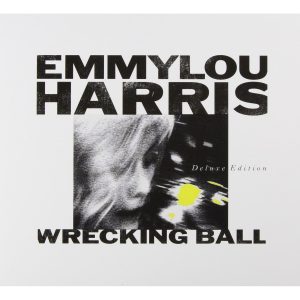
“I don’t have a formula,” he confesses. “It’s different for every song. If you’re doing a live vocal, as we did with Emmylou Harris, you need a microphone that the singer can get close to, or else you’re going to end up with too trashy a sound. You’ll get more drum in the vocal mike than you will in the drum mikes. Some of that is okay, but if you have too much, it becomes junky.
“So I like to use a vocal mic that you can sing close to: the Sony C-37-A is such a microphone. That’s really a great tube mike with a large diaphragm. Failing that, a Sheer Bata ’58 is really good, too. Then it takes care of itself in the mix.”
Lanois stresses the type of recording device you choose for the session is less important than you might think.
“I find that the tape recorder, or the recording device, is almost the link of the chain with the least personality,” he shrugs.”It’s the link in the chain that gets talked about the most — like are we going to do it digital? Are we going to do it analog? Should we use Dolby SR? Or do we go Dolby A? Should we do it at 15, or should we do it at 30? Should we use an Alesis? Should we use TASCAM? Should we use the radar system?
“You know, there’s twenty different really great recording devices out there, and they all sound good to me. I did some recording recently on a 8-track little digital TASCAM, and it sounds great. I record on my 24-track with Dolby A, at 15 i.p.s., and it sounds amazing.
“So that link in the chain is not nearly as important as all the other links. If you start at the front, the front would be the instrument or the voice — talk about acoustic recording — the instrument or the voice; microphones are next on the chain. If you were to put a Cole’s mic against an AKG 414, the sound difference would be astronomical. You’re going to hear like a 700 percent sound shift. Whereas if you were A-B, the difference between an 8-track digital TASCAM and a 24-track Studer with Dolby A at 15, you might hear a 2% personality shift.
“The kind of harmonica, or how you tune the drum, is real important. The kind of microphone you use and where you place it is real important. I use a NEVE 1066 pre-amp. The early ’70s models are really great, with great EQs. Again, that’s a huge part of the personality.”
Lanois also recommends quite a few compressors: the LA2A, the LA4A, and the 1176 Erie.
“If you open up your pre-amp quite a bit and you hit one of these compressors, that’ll be a different kind of sound than just going straight onto tape. All of those links on the chain are really important.”
Lanois says personality can also be derived from samplers.
“If you use a cheaper sampler, it’s grainier,” he says. “If you use an old Lexicon Prime Time delay, it has no top end, and that’s what’s cool about it. All that stuff for me, that’s really personality of the sound. The recorder just has to do his job and not distort.”
For both musical and production purposes, Lanois says his effects and unusual guitar sounds are usually generated from the source.
“What I use isn’t really that different from what anyone else has access to: different pedals. I tend to gravitate towards the Les Pauls of the ’50s that have P-90 pickups. They give me my dark sound. Then if I want a sweeter, more hi-fi sound that is chrome-bucking, then I use this little Fender Mustang that allows you to throw the two pick-ups out of phase, giving it a little hum bucking. I find the Fender Jazzmaster does the same thing. It’s a two-pickup instrument, and if you put the three-away switch in the center, and the two pick-ups are out of phase, there’s no hum. It’s nice for delicate things.
“I use a Gibson Firebird for my whammy instrument because it’s got a really good whammy on it. Then it just comes down to guitar amps. That’s a huge part of the personality. I prefer old VOX AC30s, but I also quite like a 1959 410 BASSMAN. The tube amps can give pretty good results. Then as far as effects and the racks, I use all the modern stuff: Evantide 4000 is a pretty good box.”
However, Lanois says he prefers economy over extravagance when injecting effects.
“I like to use effects where they’re useful,” he states. “I also like really dry sounds with nothing there at all. I like extremes. I generally don’t use reverb, somewhat on a matter of principle, because unless you’re using it to some degree, reverb puts a bit of a cloud over your work. Some of my favorite records are quite dry. Stevie Wonder records of the ’70s, for example.”
Preparation is the key to success, and Lanois infers that any pet peeves that get under his skin are technical ones.
“I don’t have pet peeves about people,” he swears. “People are forever interesting to me.
“Shall I name the three most important ingredients to a successful recording? In a recording room, you have to have about 300 power outlets evenly spread out. You require power outlets that accommodate the new generation of power supplies, and you need them all over the room, because the first thing that happens when a musician walks in is they open their case, sit down, and wonder `Where’s the power?’ So you usually end up scrambling around looking for power. You want to have power everywhere. “The next thing you need is about 200 really excellent 15-footer guitar cords. There’s always a shortage of guitar cords, and they’re often broken. So you need some brand new ones.
“Then you need about 400 25-footer high quality microphone cables. Microphone cables get used for all the effects and for microphones. They become the lines for all the interfacing.
“The last thing that is really important is the device my brother and I invented. It’s called the Neudorff Box, after somebody who used to work with me named Bill Neudorff. The Neudorff Box allows you to….it’s kind of like a Y jack, but with every possible connector on it.
“So let’s say you walked in and you said, `Dan, I’ve got a little cassette here that has a mini output, and I need to go to this DAT machine that only has an XLR input.’ Normally, somebody would say, `Well, you’re going to have to go to Radio Shack and buy an adapter.’ But if you have one of these boxes, it has a mini-connector on it and an XLR, and an RCA, and a Bennett, and a banana.
“Every connector is on this box, so you can go from anything to anything. That’s going to solve and prevent a lot of running around. In my experience, those are the things that will cause slow-ups in studios.”
Lanois says the important of interfacing can’t be over-emphasized. He says it was the most significant lesson learned during his own apprenticeship.
“Technically, interfacing is how to tie one piece of equipment to another. It might be somewhat of an unorthodox concept: Interfacing is something that doesn’t get talked about a lot, but I think is really important — the chain, and how you place your gear in the chain.
“I learned most of that from my brother Bob. He’s really good at interfacing. The rest of it is pretty psychological — who you’re going to have in the room with you…how you treat them as people…how you respect them…what kind of communication you’re going to have. All that kind of stuff is wrapped up in the spirit of the moment.”
NK: “Creative tension is an important aspect of your work. How do you see your role? It’s your responsibility to get the best performance out of the artist. Is there anything taken for granted or not credited in that role?”
DL: “That’s a funny word you mentioned — tension. I used to think that tension didn’t have much to do with good music — that music was about good vibes and relaxation.
“Those are good ingredients to have, but tension is part of the recording process, as are differences of opinion. If you have a high regard for someone you’re working with, and they have a different opinion than yours, then it’s a difference you also have to respect.
“I’ve often yielded to such a difference, and found that they were correct in the end.
“My most recent experience with that was Bob Dylan. He’s one of the greatest poets ever, so of course I have to admire his point of view. When there is a difference of opinion, I have to digest it and decipher it, and decide whether he’s overlooking something, or maybe he knows something I don’t.
“The way I solve that problem is that I don’t fight every fight. I’ll only fight the fights that really mean a lot to me and I’ll let some of the others go. What that means is when you do put up a good fight, then you have extra weight for your argument. Somebody’s likely going to listen to you. They’re not going to consider you a nag.”

For the mastering stage, Lanois recommends that you keep in mind that the ultimate goal is enhancement.
“I like the idea of mastering a lot,” he says. “There’s been a trend in the last decade I guess to brighten things considerably. The thing to remember with any equalization is what you bring to the forefront of the picture, be it top or mid-range or bottom — whatever you choose to do, that will grab the attention of those ears.
“So by adding something, you may actually be subtracting something else. You have to be aware.”
Concerning musicians pondering a future association with a producer, Lanois says that quality of the experience should be their first interest.
“I think if somebody wants to record, it’s important for them to hook in with someone who is real good. They may very well be just one of the members of the band. People have equipment at home these days.
“In my experience, there’s always somebody out there who’s really dedicated and interested, and they hit on a sound. I would just encourage people to work with somebody like that. I don’t think it has to be somebody established. If somebody’s gonna be good, they already are. They’re not well known yet. If you find somebody like that, they’ll be very affordable.”
“People often ask me, how did you get started? How did you get to this place? What did you do that a lot of other people never got around to doing?
“I think the answer is, I took an interest quite early in my work. I wasn’t juggling around. I wasn’t a keyboard player for a while, and then the manager of a record store, and this and that. I really stuck to my thing. I made a decision — it was going to be music, I was going to be a guitar player and I was going to be this recording guy.
“I haven’t budged. I’ve stuck to my dream and my commitment. I think it’s really important to be aware of interest. It’s only really through interest that you can then develop skills. Skills are really important.”
“Then when you’ve got your skills together, then you have a chance at noticing luck. People have said to me, `Man, you really got lucky, didn’t you?’ It’s true. But I was also prepared.
“I’d put in ten years of hard work, nobody knew who I was, and I think it’s really important to devote and make a decision and stick with it. That’s probably the best advice to anybody who’s thinking of getting started.
“Find something you love and go after it.”
Comfort is also important.
“I have two favorite approaches for recording. One is stay in the rehearsal room and bring some equipment in, so your workspace becomes your recording space. The good thing is that the rehearsal room usually feels comfortable, you get settled in and you get a sound, so you don’t have to uproot yourself just to go to a studio. I think that’s probably a solid piece of advice.
“Next, if you’re going to go to a studio, make sure you go some place where there’s interesting people and interesting technique,” counsels Lanois. “There’s nothing worse than coming up with something sterile. You want to come up with something exciting. That pretty much comes down to an individual running equipment, moreso than about equipment, because interfacing and what you do on all that stuff is everything.
“There is a guy in Hamilton who I think is doing some great work. In fact, he recorded Tim Gibbons’ song “Lonely One.” He didn’t get a credit on Sling Blade, and I know he’s disappointed. You could even put in there than Dan wanted Tim Hevesi to get a mention because he’s great. Be absolutely crass about it!” he laughs.
“I also did some nice recording with Robin Aube down at Grant Avenue. We did a little test recording with Sianspheric. We engineered it together. I’m listening to those recordings now, and I think they were great.
“I work with engineers differently than other people, because I already know how to do all that stuff. I can trust a newcomer, because I can correct any mistakes that are being made. I can lean over and say, `Let’s not do it this way. Let’s do it that way.’, Or let me hear what you’ve got and I’ll help you with it. I can nurture somebody along, and for me, I’d rather have somebody who is just getting started, but has a lot of go power. The results that I get from people like that are just as good as results from somebody established.”
Lanois’ generous streak has helped catapult a number of Canadian musicians and engineers to international careers: Malcolm Burn, David Bottrill, Bill Dillon and Mark Howard chief among a growing list.
“I keep my ears open for anything that comes around that sounds like quality,” says Lanois. “It’s nice to give folks a break along the way if you can. A couple people have done it for me. You just have to use your taste and keep your ear to the ground.”
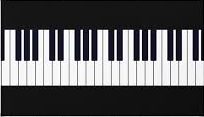
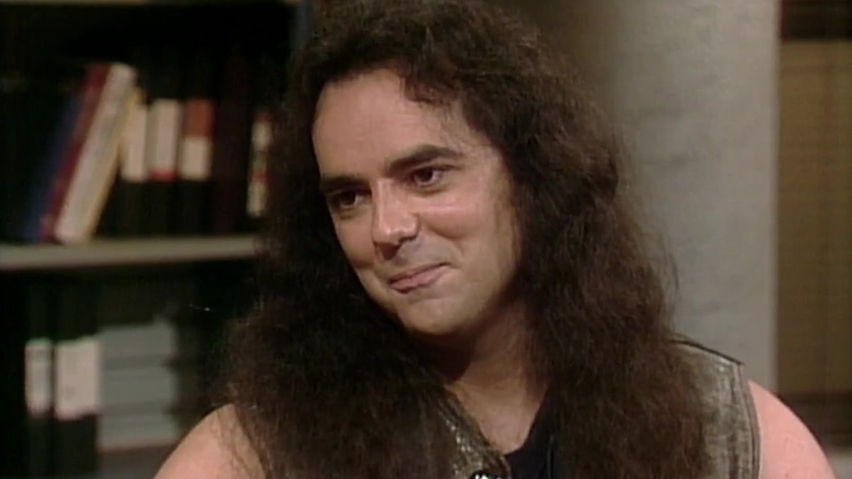
Be the first to comment on "Daniel Lanois on recording"